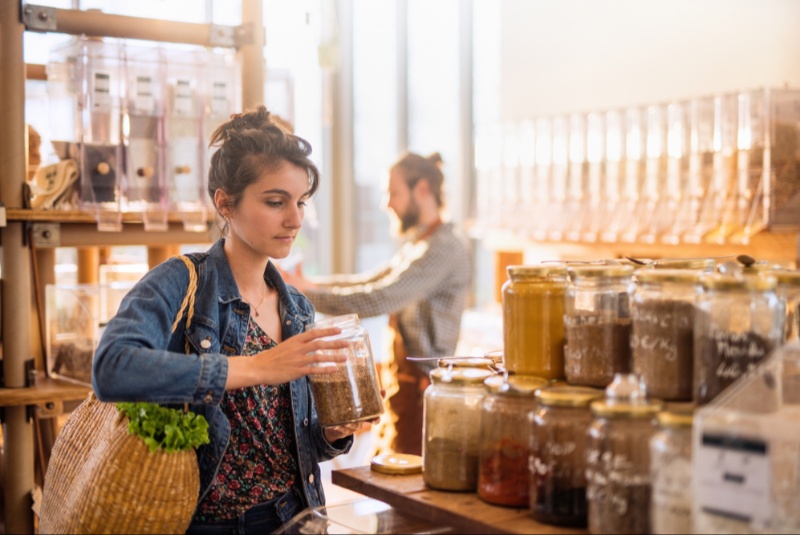Spices are the cornerstone of flavor in countless cuisines around the world, adding depth, complexity, and excitement to dishes both savory and sweet. However, navigating the vast array of spices available in stores can be overwhelming, especially for those new to cooking or unfamiliar with different flavor profiles. From whole spices to blends and seasonings, each variety offers its own unique characteristics and culinary applications. In this guide, we'll explore some tips to help you choose the best spices for your kitchen, whether you're stocking up on essentials or experimenting with new flavors.
Consider Freshness and Quality
When selecting spices, prioritize freshness and quality to ensure optimal flavor and aroma in your dishes. Freshly ground spices are more aromatic and flavorful than pre-ground varieties, as they retain their essential oils and volatile compounds. Look for spices that are packaged in airtight containers to protect them from exposure to light, heat, and moisture, which can degrade their quality over time. Additionally, consider purchasing spices from reputable brands or specialty stores that prioritize quality sourcing and production practices. While high-quality spices may come with a higher price tag, their superior flavor and potency are well worth the investment.
Choose Whole Spices When Possible
While ground spices are convenient for quick and easy seasoning, whole spices offer superior flavor and versatility, especially when freshly ground. Whole spices, such as peppercorns, cumin seeds, and cinnamon sticks, retain their essential oils and flavor compounds for longer periods, resulting in more robust and nuanced flavors when ground or infused into dishes. Investing in a quality spice grinder or mortar and pestle allows you to freshly grind whole spices as needed, unlocking their full potential and enhancing the depth and complexity of your cooking. Experiment with toasting whole spices before grinding to further intensify their flavors and aromas.

Explore Ethnic and Regional Spices
Expand your culinary horizons by exploring spices from different ethnic cuisines and regions around the world. Each culture has its own unique spice blends and flavor profiles, offering a wealth of inspiration for adventurous cooks. Whether you're intrigued by the warm spices of Indian cuisine, the aromatic herbs of Mediterranean cooking, or the fiery chilies of Latin American dishes, incorporating ethnic and regional spices into your pantry can elevate your cooking to new heights. Consider experimenting with spice blends like garam masala, za'atar, or berbere to add depth and complexity to your favorite recipes.
Check for Authenticity and Purity
When purchasing spices, be wary of adulteration and contamination, as some unscrupulous producers may dilute or adulterate spices with fillers, additives, or artificial flavors to cut costs. Look for spices that are labeled as pure, natural, and free from additives, preservatives, and artificial colors. Opt for organic spices whenever possible to minimize exposure to pesticides and synthetic chemicals. Additionally, familiarize yourself with the appearance, aroma, and taste of authentic spices to help identify any signs of adulteration or inferior quality. Buying spices from trusted sources and reputable brands can help ensure that you're getting pure, high-quality products for your culinary creations.
Store Spices Properly
Proper storage is essential for preserving the freshness, flavor, and potency of spices over time. Store spices in a cool, dry, dark place away from direct sunlight, heat, and moisture, as exposure to these elements can cause spices to lose their flavor and aroma. Avoid storing spices near sources of heat, such as stovetops or ovens, which can accelerate the degradation process. Consider transferring spices to airtight containers or jars with tight-fitting lids to protect them from air and humidity and extend their shelf life. Label containers with the date of purchase to track freshness and rotation, and discard any spices that show signs of spoilage or loss of potency.
Experiment with Blends and Seasonings
Spice blends and seasonings offer a convenient way to add complex flavors and aromas to your dishes without the need for individual spices. Experiment with different blends and seasonings to discover new flavor combinations and enhance your culinary repertoire. Whether you're seasoning meats, vegetables, or grains, spice blends like curry powder, chili seasoning, or herbes de Provence can elevate your dishes with minimal effort. Consider making your own custom spice blends at home using high-quality spices and herbs to tailor flavors to your taste preferences and dietary needs.
Seek Inspiration and Guidance
Don't be afraid to seek inspiration and guidance when choosing spices for your kitchen. Explore cookbooks, culinary websites, and cooking shows for recipe ideas and flavor combinations that incorporate various spices and herbs. Join online cooking communities and forums to exchange tips, recipes, and recommendations with fellow food enthusiasts. Visit local spice shops, farmers' markets, and ethnic grocery stores to discover unique and hard-to-find spices and seek advice from knowledgeable staff. By immersing yourself in the world of spices and embracing a spirit of curiosity and experimentation, you can elevate your cooking to new heights and delight your taste buds with exciting flavors and aromas.
Choosing the best spices for your kitchen requires careful consideration of freshness, quality, variety, and authenticity. By prioritizing fresh, high-quality spices, exploring diverse ethnic and regional flavors, and experimenting with whole spices and blends, you can elevate your cooking to new heights and delight your palate with exciting and complex flavors. Whether you're a seasoned chef or a novice cook, stocking your pantry with a diverse selection of spices opens up a world of culinary possibilities and allows you to infuse your dishes with creativity, passion, and flavor. With these tips as your guide, you can embark on a flavorful journey of exploration and discovery, one spice at a time.




